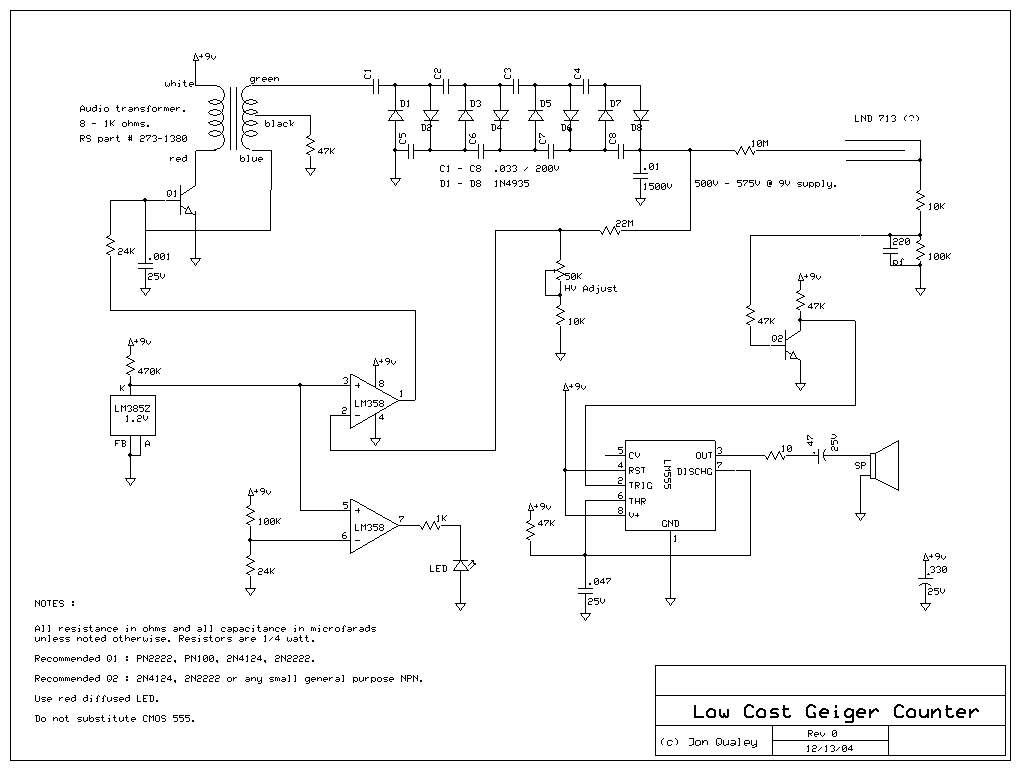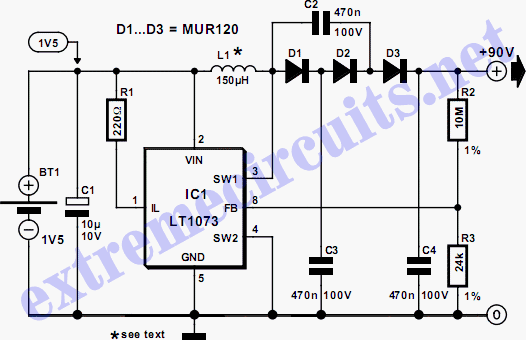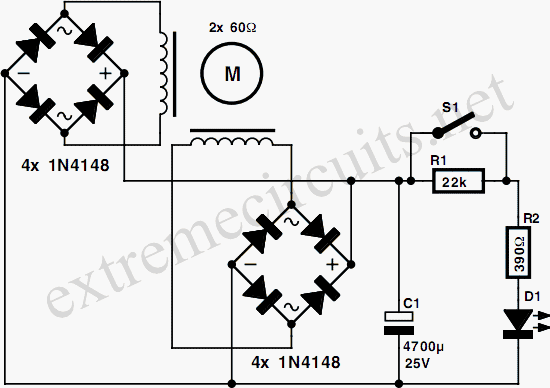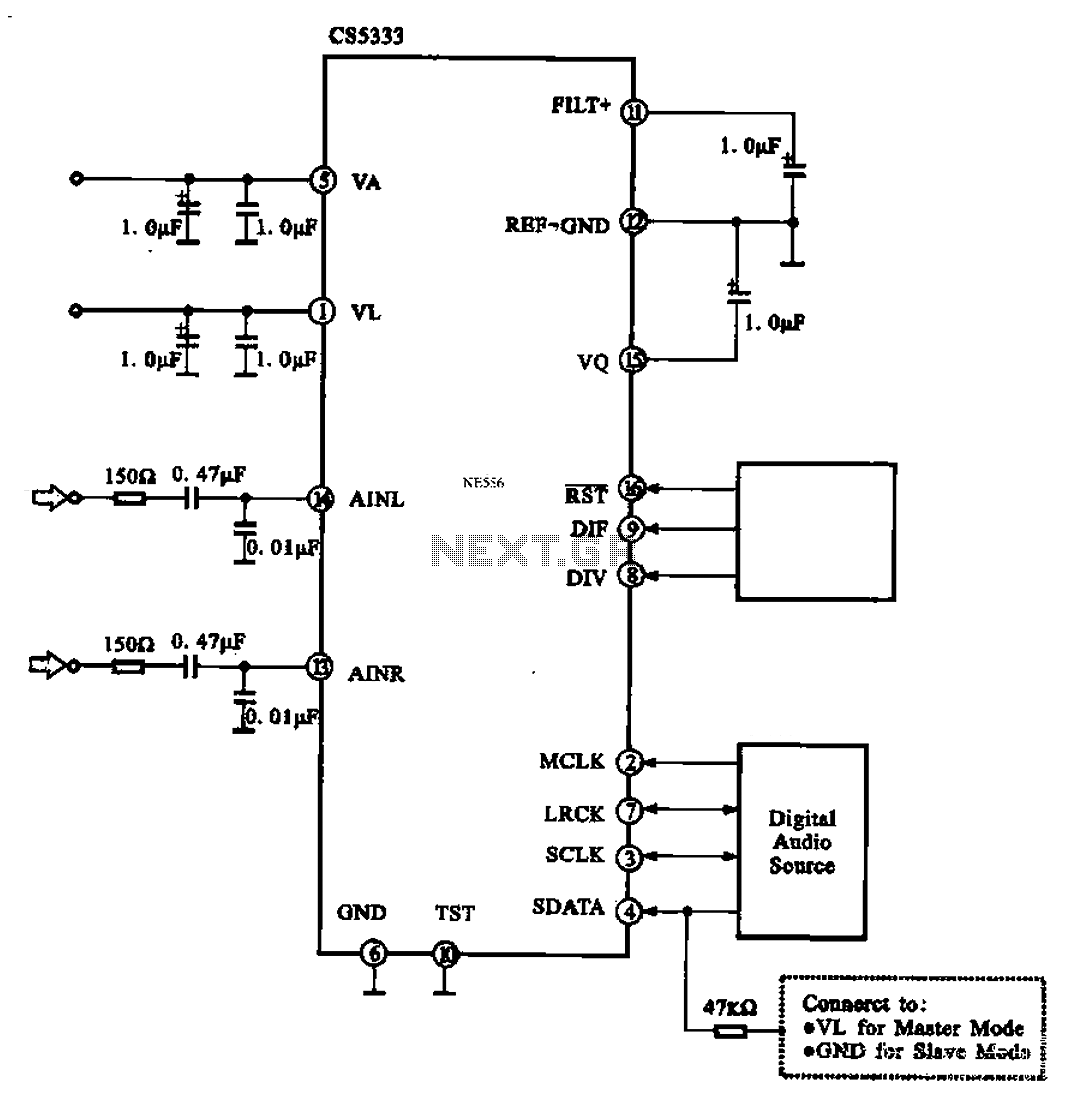
variable step up dc dc converter 2

It may seem like a simple question, but since 240VAC-12VAC transformers are commonly available and are approximately the same size, could one of these be used in the circuit instead? If the specific transformer mentioned in the schematic is not accessible, any transformer with the specifications of a primary 117VAC and a secondary 6.3VAC center-tapped (CT) should suffice. In this scenario, it may be necessary to select a different drive frequency to achieve optimal performance from the transformer. The overall performance can vary significantly with changes in the drive frequency. In a series of experiments, the transformer was loaded directly with a variable resistor (without using a rectifier), and measurements were taken of the AC voltage across the resistor and the DC current flowing into the transformer while varying the drive frequency. The goal was to identify a frequency that maximized output voltage while minimizing input current. The ripple observed was approximately +/-25V for output voltages exceeding 200V, and the ripple waveform was not sinusoidal; it appeared as a spike that gradually decayed until the next spike occurred.
The circuit in question involves a transformer that converts high-voltage AC to a lower voltage level suitable for further processing. When considering the use of a 240VAC-12VAC transformer, it is essential to ensure that the primary and secondary voltage ratings align with the requirements of the circuit. The primary winding must be rated for 117VAC, while the secondary winding should provide 6.3VAC center-tapped output.
In practical applications, the selection of the drive frequency is crucial for maximizing transformer efficiency. The transformer operates optimally at a specific frequency, which can be determined through experimentation. By loading the transformer with a variable resistor and measuring the output across this load, the relationship between frequency, output voltage, and input current can be analyzed.
The ripple voltage is a critical parameter in the design of power supply circuits. In this case, a ripple of +/-25V at output voltages greater than 200V indicates that the output is not a smooth DC, but rather exhibits significant fluctuations. The waveform characteristics, described as spikes followed by a decay, suggest that additional filtering may be required to smooth the output voltage if a stable DC supply is necessary for subsequent circuit stages.
Overall, careful consideration must be given to transformer specifications, drive frequency, and output characteristics to ensure reliable operation in the intended application.Might be a stupid quiestion but as 240vac-12vac transformers are readily available (and are roughly the same scale) could i use one of these in the circuit instead If the specific transformer mentioned in the schematic is not available to you, any transformer with the specifications primary 117VAC, secondary 6. 3VAC CT (center-tapped) should work. In this case you might have to choose a different drive frequency in order to operate at the sweet spot of the transformer: "[. ] I found in driving a transformer as is done in this project that the overall performance varied significantly as I varied the drive frequency.
In a series of experiments I loaded the transformer directly with a variable resistor (no rectifier used), measured the AC voltage across this resistor, measured the DC current into the transformer, and varied the drive frequency. I looked for a frequency where the output voltage was highest and the input current was lowest. [. ] `ripple` is roughly +/-25V for output voltage >200V. This ripple isn`t sinusoidal at all. It is basically a spike then monotonically decays until the next spike. " 🔗 External reference
The circuit in question involves a transformer that converts high-voltage AC to a lower voltage level suitable for further processing. When considering the use of a 240VAC-12VAC transformer, it is essential to ensure that the primary and secondary voltage ratings align with the requirements of the circuit. The primary winding must be rated for 117VAC, while the secondary winding should provide 6.3VAC center-tapped output.
In practical applications, the selection of the drive frequency is crucial for maximizing transformer efficiency. The transformer operates optimally at a specific frequency, which can be determined through experimentation. By loading the transformer with a variable resistor and measuring the output across this load, the relationship between frequency, output voltage, and input current can be analyzed.
The ripple voltage is a critical parameter in the design of power supply circuits. In this case, a ripple of +/-25V at output voltages greater than 200V indicates that the output is not a smooth DC, but rather exhibits significant fluctuations. The waveform characteristics, described as spikes followed by a decay, suggest that additional filtering may be required to smooth the output voltage if a stable DC supply is necessary for subsequent circuit stages.
Overall, careful consideration must be given to transformer specifications, drive frequency, and output characteristics to ensure reliable operation in the intended application.Might be a stupid quiestion but as 240vac-12vac transformers are readily available (and are roughly the same scale) could i use one of these in the circuit instead If the specific transformer mentioned in the schematic is not available to you, any transformer with the specifications primary 117VAC, secondary 6. 3VAC CT (center-tapped) should work. In this case you might have to choose a different drive frequency in order to operate at the sweet spot of the transformer: "[. ] I found in driving a transformer as is done in this project that the overall performance varied significantly as I varied the drive frequency.
In a series of experiments I loaded the transformer directly with a variable resistor (no rectifier used), measured the AC voltage across this resistor, measured the DC current into the transformer, and varied the drive frequency. I looked for a frequency where the output voltage was highest and the input current was lowest. [. ] `ripple` is roughly +/-25V for output voltage >200V. This ripple isn`t sinusoidal at all. It is basically a spike then monotonically decays until the next spike. " 🔗 External reference





